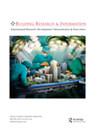体育场馆与商业空间整合模式与分析——以中国为例
IF 3.7
3区 工程技术
Q1 CONSTRUCTION & BUILDING TECHNOLOGY
引用次数: 0
摘要
单纯用于体育比赛的体育场馆会导致赛后环境的荒芜和资源的浪费。然而,对于体育场馆与商业空间的整合模式和路径,中国还缺乏系统的研究。本研究确定了体育场馆与商业空间的整合模式,分析了相关因素,并提出了发展框架。研究方法包括文献法、案例法、模式归纳法和专家访谈法。通过对58个案例的分析,总结出8种体育与商业空间融合的模式;分析了不同模式与开发类型、土地利用环境、业务配置的相关性;并对两个案例进行了深入分析。研究发现,开发阶段的开放心态可以促进新模式的出现,设计阶段对土地环境的利用可以提高场馆利用率,运营阶段的多业务配置可以促进城市活力的形成。提出了一个发展框架,强调各利益相关者的协作,以优化决策、建设和运营过程的每一步。这些发现有助于确定中国体育场馆的发展方向,并为体育场馆向动态城市综合体的转变提供实用的方法。本文章由计算机程序翻译,如有差异,请以英文原文为准。
Models and analysis of stadium and commercial space integration: a case study from China
ABSTRACT Stadiums that are solely used for athletic competitions can lead to a desolate post-event environment and the waste of resources. However, China still lacks systematic research on the integration models of and paths between stadiums and commercial spaces. This study identified models of stadium and commercial space integration, analyzed the associated factors, and proposed a development framework. The research methods included literature review, case data collection, pattern induction and expert interviews. By analyzing 58 cases, this study summarized eight models for stadium–commercial space integration; analyzed the correlation between different models and development types, land use environments, and business configurations; and conducted in-depth analysis of two cases. The findings indicate that an open mindset during the development stage can promote the emergence of new models, utilizing the land environment during the design stage can improve stadium utilization rate, and a multi-business configuration during the operation stage can promote the formation of urban vitality. A development framework is proposed, which emphasizes the collaboration of all stakeholders to optimize every step of the decision-making, construction and operation processes. These findings contribute to identifying development directions for stadiums in China and provide practical methods for the transformation of stadiums into dynamic urban complexes.
求助全文
通过发布文献求助,成功后即可免费获取论文全文。
去求助
来源期刊

Building Research and Information
工程技术-结构与建筑技术
CiteScore
8.60
自引率
7.70%
发文量
43
审稿时长
>12 weeks
期刊介绍:
BUILDING RESEARCH & INFORMATION (BRI) is a leading international refereed journal focussed on buildings and their supporting systems. Unique to BRI is a focus on a holistic, transdisciplinary approach to buildings and the complexity of issues involving the built environment with other systems over the course of their life: planning, briefing, design, construction, occupation and use, property exchange and evaluation, maintenance, alteration and end of life. Published articles provide conceptual and evidence-based approaches which reflect the complexity and linkages between cultural, environmental, economic, social, organisational, quality of life, health, well-being, design and engineering of the built environment.
 求助内容:
求助内容: 应助结果提醒方式:
应助结果提醒方式:


